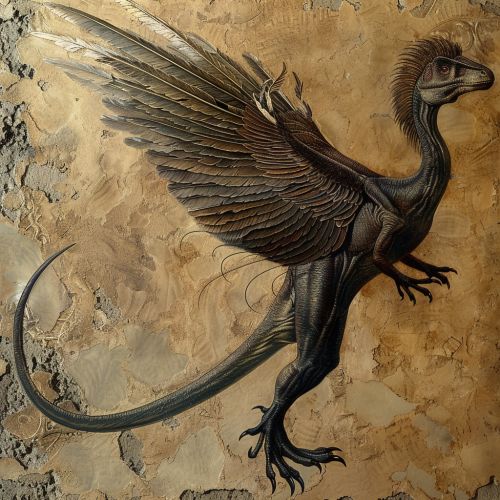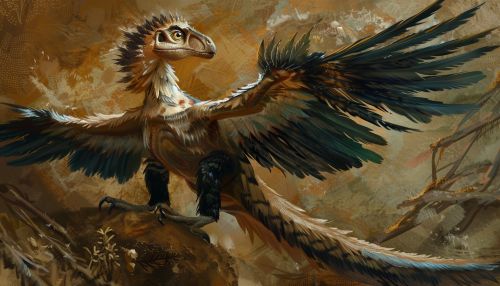Archaeopteryx
Introduction
The Archaeopteryx is a genus of bird-like dinosaurs that is transitional between non-avian feathered dinosaurs and modern birds. The name derives from the ancient Greek ἀρχαῖος (archaīos), meaning "ancient", and πτέρυξ (ptéryx), meaning "feather" or "wing". The genus Archaeopteryx lived in the Late Jurassic period around 150 million years ago, in what is now southern Germany during a time when Europe was an archipelago of islands in a shallow warm tropical sea, much closer to the equator than it is now.
Description
Archaeopteryx specimens are among the most important fossil discoveries in the history of paleontology. They are the oldest known birds, dating from about 150 million years ago during the Jurassic period. Archaeopteryx was roughly the size of a raven, with broad wings that were rounded at the ends and a long tail compared to its body length. It could reach up to 500 millimeters (20 in) in body length, with an estimated mass of 0.8 to 1 kilogram (1.8 to 2.2 lb).


Anatomy and Morphology
Archaeopteryx is characterized by features shared with both birds and non-avian dinosaurs. Like modern birds, Archaeopteryx had feathers, a wishbone (furcula), and reduced fingers, among other features. However, it also shared many traits with non-avian dinosaurs, including a long bony tail, conical teeth, and a lack of a fully reversed hallux (the first toe, or 'big toe'). These characteristics make Archaeopteryx a clear candidate for a transitional fossil between non-avian dinosaurs and birds.
Discovery and Species
The first Archaeopteryx specimen was discovered in 1860 in the Solnhofen limestone in Germany, which is a lagerstätte, a rare and remarkable geological formation known for its superbly detailed fossils. Over the years, ten more fossils of Archaeopteryx have surfaced. All of the known specimens have been sourced from the limestone deposits of Solnhofen. The discovery of the first complete specimen of Archaeopteryx in 1861, just two years after Charles Darwin published On the Origin of Species, provided a significant boost to the theory of evolution.
Paleobiology
The lifestyle of Archaeopteryx is a controversial subject, as many aspects of its biology are not yet known. It is generally agreed that it was a predator, though whether it was terrestrial (land-dwelling) or arboreal (tree-dwelling) is not definitively known. The structure of its wings and tail suggest that it was capable of powered flight, but it is not known how frequently or efficiently it could fly. Recent studies suggest that it was likely a capable flier, though probably not as efficient as modern birds.
Significance to Science
The significance of Archaeopteryx lies in its representation of the transitional phase between non-avian dinosaurs and birds. It is often considered the first bird, though some scientists prefer to consider it a dinosaur. Its discovery has caused a significant impact on the scientific world, providing support for the theory of evolution, which was newly proposed at the time of its discovery.
